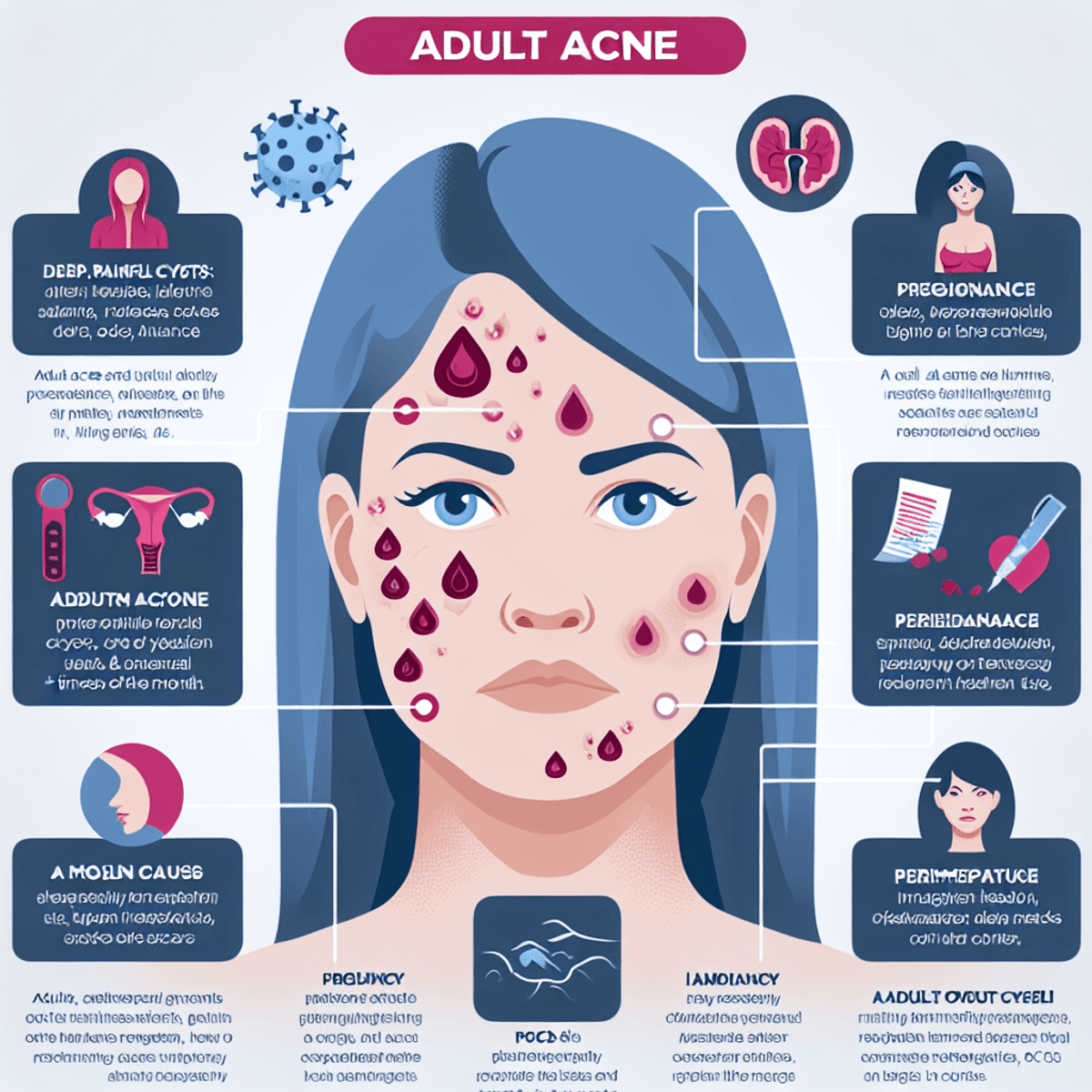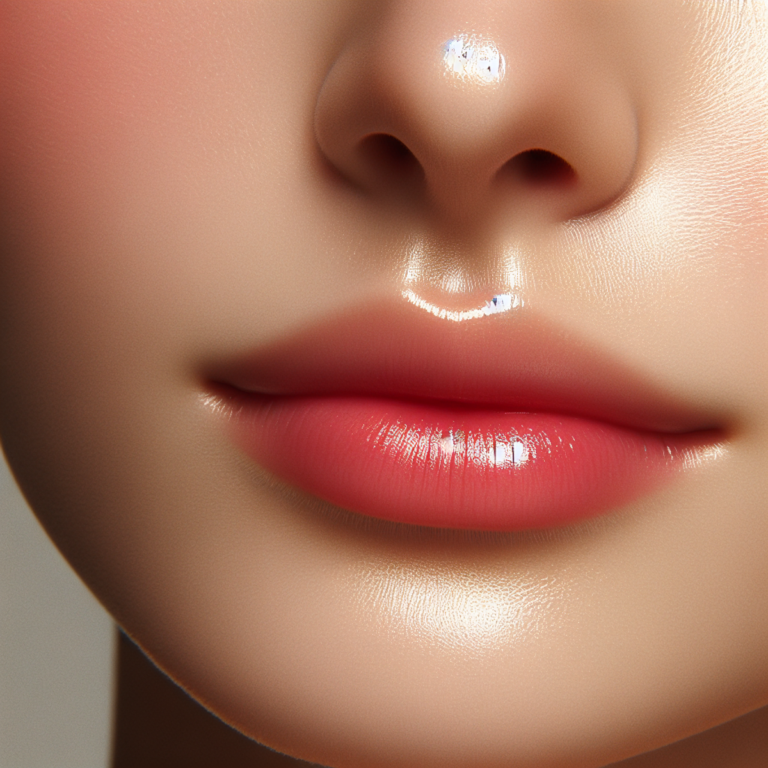Adult acne treatment dermatologists recommend

Introduction
Adult acne affects millions worldwide, with studies showing up to 15% of women experiencing breakouts well into their 40s and 50s. This persistent skin condition can be frustrating and impact both professional and personal life.
You might notice these stubborn blemishes appearing in different patterns than your teenage breakouts:
- Deep, painful cysts along the jawline
- Recurring breakouts during specific times of the month
- Inflammation that leaves lasting marks and scars
The good news? Dermatologists have developed effective treatment strategies specifically for adult acne. These targeted approaches address the unique challenges of mature skin, considering factors like:
- Hormonal fluctuations
- Stress levels
- Skin sensitivity
- Anti-aging concerns
Finding the right treatment combination can transform your skin health and confidence. Whether you’re dealing with occasional spots or persistent breakouts, professional guidance can help you navigate the complex world of adult acne treatments.
Many people attempt to treat adult acne with random products or quick fixes. This approach often leads to frustration and wasted money. Working with a dermatologist helps create a personalized treatment plan that addresses your specific skin concerns and lifestyle needs.
Let’s explore the professional treatments and strategies dermatologists recommend for managing adult acne effectively.
Understanding Adult Acne
Adult acne is different from teenage acne and can be more challenging for those who have it. While teenagers usually get acne on their T-zone (forehead, nose, and chin), adults tend to have breakouts on their lower face, jawline, and neck.
Primary Causes of Adult Acne:
1. Hormonal Fluctuations
- Menstrual cycles
- Pregnancy
- Perimenopause
- Polycystic ovary syndrome (PCOS)
- Birth control changes
2. Stress-Related Factors
- Increased cortisol production
- Disrupted sleep patterns
- Compromised immune system
- Enhanced oil production
- Inflammation triggers
3. Environmental Influences
- Pollution exposure
- High humidity
- Workplace conditions
- Heavy makeup use
- Phone screen bacteria
Adult acne needs special treatment because aging skin doesn’t regenerate or heal as quickly. Your skin also becomes more sensitive and prone to scarring, which means aggressive treatments could do more harm than good.
Types of Adult Acne:
1. Inflammatory Acne
- Red, painful bumps
- Deep cystic lesions
- Persistent nodules
2. Non-Inflammatory Acne
- Blackheads
- Whiteheads
- Comedones
Distinctive Adult Acne Patterns:
- Deeper, more painful lesions
- Slower healing process
- Higher risk of post-inflammatory hyperpigmentation (dark spots)
- Increased sensitivity to traditional acne treatments
- Combination of aging and acne issues
Adults also face additional challenges like finding a balance between anti-aging products and acne treatments. Your skin requires gentle yet effective solutions that can tackle both breakouts and mature skin concerns without causing excessive dryness or irritation.
The emotional impact of adult acne is often greater than that of teenage acne. It can affect your confidence at work and in social situations. This emotional aspect can create a cycle where stress triggers breakouts, leading to higher stress levels and subsequent acne flare-ups.
Recommended Treatments by Dermatologists
Dermatologists use a comprehensive approach to treat adult acne, addressing both immediate relief and long-term management. The treatment plan usually begins with the least invasive options and progresses based on your skin’s response.
Topical Treatments
First-Line Defense Options:
- Retinoids: Adapalene (0.1% and 0.3%), Tretinoin, Tazarotene
- Benzoyl Peroxide (2.5% – 10%)
- Salicylic Acid (0.5% – 2%)
These treatments work in different ways:
- Retinoids increase cell turnover and prevent clogged pores.
- Benzoyl peroxide kills acne-causing bacteria and reduces inflammation.
- Salicylic acid unclogs pores and reduces excess oil.
Application Tips for Maximum Benefits:
- Cleanse First: Use a gentle, non-comedogenic cleanser
- Layer Properly:
- Thinnest to thickest consistency
- Wait 1-2 minutes between products
- Time It Right:
- Retinoids at night
- Benzoyl peroxide in the morning
- Salicylic acid can be used twice daily
Common Combinations That Work:
- Morning:
- Salicylic acid cleanser
- Benzoyl peroxide spot treatment
- Non-comedogenic moisturizer
- Sunscreen
- Night:
- Gentle cleanser
- Retinoid
Prescription Medications
When over-the-counter treatments prove ineffective, dermatologists prescribe stronger medications to combat persistent adult acne. These medications target specific aspects of acne formation, from bacteria growth to hormone regulation.
Oral Antibiotics
- Tetracyclines (doxycycline, minocycline)
- Erythromycin
- Trimethoprim-sulfamethoxazole
These antibiotics reduce inflammation and kill acne-causing bacteria. Treatment duration typically ranges from 3-6 months.
Hormonal Treatments
- Spironolactone – blocks androgen receptors
- Birth control pills – regulate hormone levels
- Combined oral contraceptives with anti-androgenic properties
Women with chin and jawline breakouts often respond well to these hormone-regulating medications.
Prescription-Strength Topicals
- Tretinoin (higher strength retinoid)
- Clindamycin (antibiotic)
- Combination products (adapalene/benzoyl peroxide)
Your dermatologist might prescribe these medications based on:
- Acne severity
- Previous treatment responses
- Skin type and sensitivity
- Medical history
- Pregnancy status
- Lifestyle factors
Important Considerations
- Regular monitoring required
- Potential side effects need discussion
- Some medications require blood tests
- Insurance coverage varies
- Pregnancy testing for certain medications
- Sun protection essential
These medications work best as part of a comprehensive treatment plan, including proper skincare routine and lifestyle modifications. Your dermatologist will adjust prescriptions based on your skin’s response and tolerance to treatment.
Isotretinoin: A Powerful Option for Severe Cases
Isotretinoin is the most powerful prescription medication available for treating severe adult acne. This oral retinoid works by shrinking oil glands, reducing sebum production, and preventing clogged pores that lead to breakouts.
You might consider isotretinoin treatment if you experience:
- Deep, painful cystic acne
- Acne that leaves significant scarring
- Breakouts resistant to other treatments
- Widespread acne on face, chest, and back
A typical isotretinoin treatment course lasts 4-6 months. The medication requires strict monitoring through regular blood tests and pregnancy tests for female patients due to its potential side effects.
Common side effects include:
- Dry skin and lips
- Sun sensitivity
- Joint pain
- Temporary worsening of acne
Success rates with isotretinoin:
- 85% of patients see permanent clearing after one course
- Some patients might need a second course
- Results typically begin showing after 2-3 months
The medication must be prescribed under the iPLEDGE program, which ensures safe use through monthly monitoring. Your dermatologist will determine the appropriate dosage based on your body weight and acne severity, adjusting it throughout the treatment period to maximize results while managing side effects.
Professional Procedures for Adult Acne Management
Professional dermatological procedures offer powerful solutions for stubborn adult acne cases. These in-office treatments target multiple skin concerns simultaneously, from active breakouts to scarring.
1. Chemical Peels
- Glycolic acid peels remove dead skin cells and unclog pores
- Salicylic acid peels penetrate deeply to reduce inflammation
- TCA peels help fade post-acne marks and improve skin texture
- Treatment sessions typically last 15-30 minutes
- Results become visible after 3-6 sessions
2. Blue Light Therapy
- Uses specific wavelengths to kill acne-causing bacteria
- Non-invasive treatment with minimal side effects
- Each session takes 15-20 minutes
- Requires multiple sessions for optimal results
- Can be combined with other treatments
3. Microdermabrasion
- Exfoliates skin surface to remove congestion
- Stimulates collagen production
- Helps reduce appearance of shallow acne scars
- Gentle enough for sensitive skin
- Monthly treatments recommended for maintenance
4. Laser Treatments
- Target inflammation and redness
- Reduce oil production
- Minimize appearance of enlarged pores
- Help fade post-inflammatory hyperpigmentation
- Results typically visible after 4-6 sessions
These professional procedures carry potential risks, including:
- Temporary redness
- Mild swelling
- Skin sensitivity
- Post-treatment peeling
- Sun sensitivity
Your dermatologist will create a customized treatment plan based on your skin type, acne severity, and specific concerns. Many patients benefit from combining multiple procedures for enhanced results.
Building an Effective Skin Care Routine for Adult Acne-Prone Skin
Creating a consistent skincare routine is crucial for managing adult acne. Your daily regimen needs to balance treating breakouts while maintaining skin health.
Essential Steps for Your Morning Routine:
- Start with a gentle, pH-balanced cleanser
- Apply treatment products on clean, dry skin
- Use non-comedogenic moisturizer
- Finish with broad-spectrum SPF 30 or higher
Evening Routine Components:
- Double cleanse to remove makeup and impurities
- Apply active ingredients (retinoids, salicylic acid)
- Use lightweight, oil-free moisturizer
Cleansing Best Practices:
Your cleansing technique impacts your skin’s health. Use lukewarm water and gentle circular motions. Avoid harsh scrubbing, which can irritate active breakouts and spread bacteria.
Product Application Order:
- Thinnest to thickest consistency
- Water-based products first
- Oil-based products last
- Wait 1-2 minutes between layers
Key Ingredients to Look For:
- Niacinamide – reduces inflammation
- Hyaluronic acid – hydrates without clogging
- Ceramides – strengthens skin barrier
- Green tea extract – soothes irritation
Common Routine Mistakes to Avoid:
- Over-washing your face
- Skipping moisturizer
- Using too many active ingredients
- Not giving products enough time to work
Spot Treatment Tips:
Apply targeted treatments directly to individual blemishes using clean fingers or cotton swabs. Don’t layer multiple spot treatments – pick one effective solution and stick with it.
Signs Your Routine Needs Adjustment:
- Increased sensitivity
- Persistent dryness
- New breakouts in unusual areas
- Burning or stinging sensations
Your skin needs time to adjust to new products. Introduce one new product at a time and wait 2-3 weeks before adding another. This helps identify which products work best for your skin and which might cause reactions.
The Role of Sun Protection in Preventing Post-Acne Hyperpigmentation
Sun exposure significantly impacts post-acne healing and can worsen dark spots (hyperpigmentation) left behind after breakouts clear. UV rays trigger melanin production in healing acne lesions, leading to persistent dark marks that can take months to fade.
Key Benefits of Sun Protection for Acne-Prone Skin:
- Prevents post-inflammatory hyperpigmentation (PIH)
- Protects healing acne lesions from UV damage
- Reduces risk of scarring
- Maintains skin barrier health during acne treatment
Your daily sun protection strategy should include a broad-spectrum SPF 30-50 sunscreen specifically formulated for acne-prone skin. Look for lightweight, non-comedogenic formulas labeled “oil-free” or “mattifying” to avoid clogged pores. It’s important to note that a significant percentage of people don’t apply enough sunscreen, which can drastically reduce its effectiveness according to statistics from the American Academy of Dermatology.
Recommended Application Tips:
- Apply sunscreen as the last step in your morning skincare routine
- Use a quarter-sized amount for full face coverage
- Reapply every 2 hours during sun exposure
- Choose mineral-based options if chemical sunscreens irritate your skin
Many acne treatments increase sun sensitivity, including retinoids, benzoyl peroxide, and certain antibiotics. Proper sun protection becomes even more crucial when using these medications to prevent additional skin damage and maintain treatment effectiveness.
Physical sun protection methods like wide-brimmed hats and seeking shade complement your sunscreen use, creating a comprehensive shield against UV-induced hyperpigmentation. Moreover, understanding the science behind how UV rays affect our skin can help us appreciate the importance of sun protection. Research has shown that excessive sun exposure can lead to various skin issues, including worsening acne and prolonging the healing process, as discussed in this study published on NCBI.
Lifestyle Modifications That Can Support Your Adult Acne Treatment Journey
Your daily habits play a significant role in managing adult acne. Small changes in your lifestyle can create noticeable improvements in your skin’s health and appearance.
Diet and Skin Health Connection
- Cut back on high-glycemic foods like white bread, sugary snacks, and processed meals
- Add zinc-rich foods such as pumpkin seeds, lean meats, and oysters
- Include omega-3 fatty acids through salmon, chia seeds, and walnuts
- Boost antioxidant intake with colorful fruits and vegetables
- Stay hydrated with 8-10 glasses of water daily
Dairy and Acne
Research suggests dairy products might trigger acne in some adults. Consider tracking your dairy intake and observing any correlations with breakouts. Plant-based alternatives like almond or oat milk can serve as suitable replacements.
Sleep and Skin Recovery
Quality sleep supports skin healing and hormone regulation. Create a consistent sleep schedule and aim for 7-9 hours nightly. Change your pillowcase twice weekly to prevent bacteria buildup.
Stress Management Techniques for Clearer Skin
Chronic stress triggers cortisol production, leading to increased sebum and inflammation. These stress-reduction methods can help manage acne:
Physical Activities
- Yoga practice (15-30 minutes daily)
- Regular exercise (30 minutes, 3-4 times weekly)
- Walking in nature
- Swimming or low-impact activities
Mental Wellness Practices
- Deep breathing exercises (5 minutes, twice daily)
- Meditation apps or guided sessions
- Journaling before bed
- Progressive muscle relaxation
Lifestyle Adjustments
- Set boundaries at work
- Practice time management
- Schedule regular breaks
- Engage in hobbies
Environmental Factors
- Keep your phone screen clean
- Avoid touching your face throughout the day
- Use clean towels for face drying
- Maintain clean makeup brushes
- Keep hair products away from your face
These lifestyle modifications work best when combined with proper skincare routines and medical treatments. Track your progress through photos or a skin journal to identify which changes yield the
When to Seek Help from a Dermatologist For Your Adult Acne Concerns?
While home remedies and over-the-counter treatments work for mild acne cases, certain signs indicate it’s time to consult a dermatologist:
Red Flag Symptoms:
- Deep, painful cysts or nodules under the skin
- Acne that persists despite trying multiple pimple treatments at home
- Development of dark spots or scarring
- Breakouts affecting your self-esteem or social life
- Acne covering large areas of your face, chest, or back
Professional Assessment Benefits:
- Accurate diagnosis of acne type and underlying causes
- Customized treatment plans based on your skin’s specific needs
- Access to prescription-strength medications
- Professional guidance on proper skincare routines
- Expert advice on preventing future breakouts
A dermatologist can offer advanced solutions beyond standard pimple remedies, including:
- Specialized treatments for blind pimples
- Professional-grade pimple scar removal procedures
- Hormonal therapy options
- Combination treatments targeting multiple acne factors
The right time to seek professional help isn’t determined by how long you’ve had acne, but by its impact on your life and skin health. Dermatologists recommend early intervention to prevent scarring and achieve faster results, rather than experimenting with various home treatments that might not address the root cause of your acne.
FAQs (Frequently Asked Questions)
What are the common causes of adult acne?
Common causes of adult acne include hormonal changes, stress factors, and lifestyle choices. Unlike teenage acne, adult acne can be influenced by fluctuations in hormones due to menstruation, pregnancy, or hormonal therapies, as well as external stressors.
What topical treatments do dermatologists recommend for adult acne?
Dermatologists commonly recommend topical treatments such as retinoids, benzoyl peroxide, and salicylic acid for mild cases of adult acne. These ingredients help reduce breakouts and prevent future occurrences by promoting skin cell turnover and targeting bacteria.
When should I consider prescription medications for my adult acne?
Prescription medications may be necessary if you have stubborn or severe cases of adult acne that do not respond to over-the-counter treatments. Commonly prescribed options include oral antibiotics and hormonal treatments tailored to target specific aspects of your condition.
How effective is isotretinoin for treating severe adult acne?
Isotretinoin is a powerful oral medication that can be very effective for severe forms of adult acne that have not responded to other treatments. It works by significantly reducing oil production in the skin and preventing clogged pores.
Are there professional procedures available for managing adult acne?
Yes, there are various professional procedures available for managing adult acne. These may include chemical peels, laser therapy, and extraction techniques performed by dermatologists to help reduce breakouts and improve skin texture.
What natural methods can I use to remove pimples permanently?
While completely removing pimples permanently may not be feasible, natural methods such as maintaining a balanced diet, practicing good skincare routines, using essential oils like tea tree oil, and managing stress levels can help minimize breakouts and improve overall skin health.










